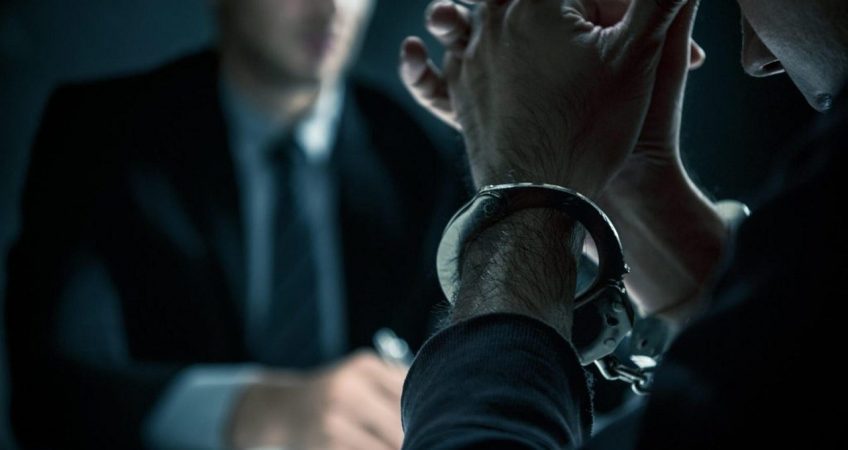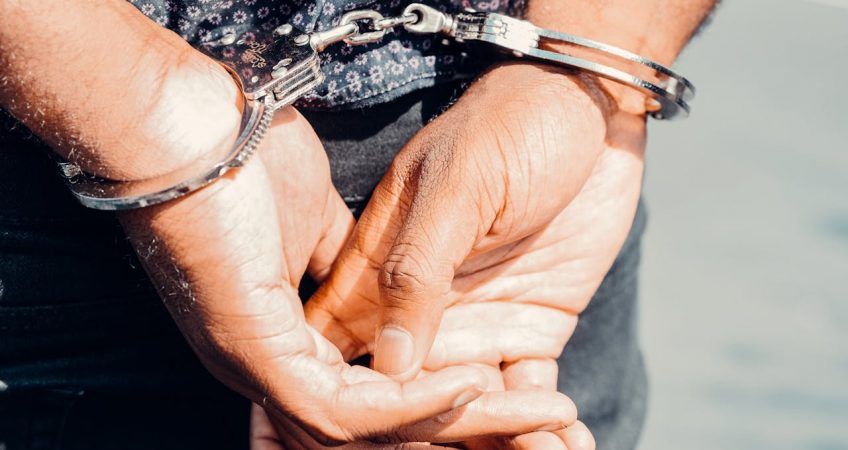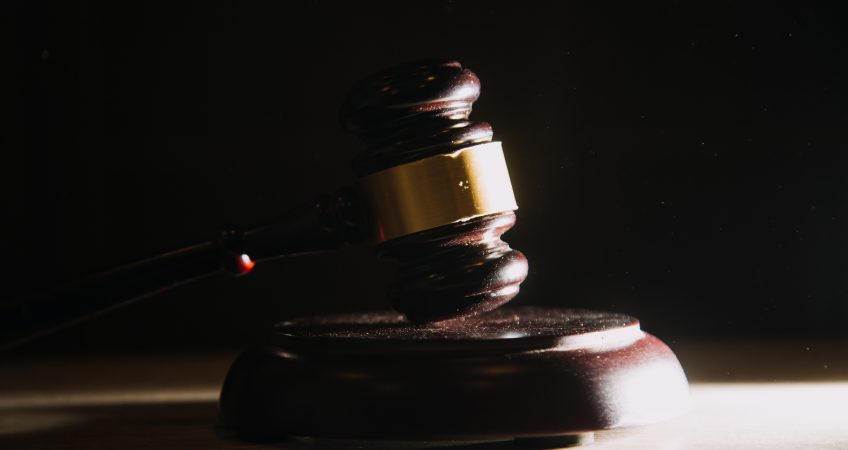Henry Cantor
April 8, 2024
Victims play a critical role in the process of handling domestic violence charges. Their initial report often starts the legal response. Law enforcement then steps in to investigate the claims. Victims’ statements provide valuable insights that guide the early stages of prosecution. However, a common misunderstanding exists about the victim’s power to “drop” charges. Once […]
Henry Cantor
April 5, 2024
Understanding Plea Bargains in Los Angeles A plea bargain is essentially an agreement in a criminal case where the defendant agrees to plead guilty or no contest in return for certain benefits, like lighter charges or a more lenient sentence, from the prosecutor. This negotiation process requires active participation from both the prosecutor and the […]
Henry Cantor
April 4, 2024
if you’re pulled over for suspected DUI, law enforcement is likely to request a breathalyzer test to assess your BAC. While complying is often advised, should you choose to refuse, it’s vital to understand the resulting legal and practical consequences. Refusing a breathalyzer under the state’s implied consent law, which you agree to by driving, […]
Henry Cantor
April 3, 2024
The Laguna Beach Unified School District and local law enforcement are investigating the circulation of AI-generated nude photos of students online. This incident raises significant legal questions, particularly regarding the creation and distribution of explicit images using artificial intelligence. The investigation began after it was discovered that nude photos of students, generated by artificial intelligence […]
Henry Cantor
April 3, 2024
Guilty Plea to Federal Narcotics Charge In Los Angeles, three men from Sinaloa, Mexico, admitted their roles in a drug trafficking operation. Florencio Camacho Allan, Gerardo Gaxiola Patiño, and Alex Valdez Oroz pleaded guilty to conspiracy to distribute and possess with intent to distribute fentanyl. This charge implicates them in a scheme to distribute over […]
Henry Cantor
April 2, 2024
DUI Defense at The Law Offices of Arash Hashemi Facing a DUI charge in California can lead to significant consequences, including fines, license suspensions, and possible imprisonment. The DUI laws are extensive and strictly applied by both the criminal justice system and the Department of Motor Vehicles (DMV). At The Law Offices of Arash Hashemi, […]
Henry Cantor
April 1, 2024
Understanding California Spousal Abuse Charges California takes spousal abuse very seriously. This type of abuse is more than just physical harm. It includes a wide range of harmful actions and behaviors that hurt someone’s safety and well-being. In California, spousal abuse isn’t only about what a spouse or ex-spouse does. It also covers harmful acts […]
Henry Cantor
March 29, 2024
Defendant’s Right to Have a Lawyer In California, every criminal defendant has the right to legal representation. This right is guaranteed by the Sixth Amendment of the U.S. Constitution. If a defendant cannot afford a lawyer, the court will appoint one. This is known as a public defender. Defendants can also choose to hire a […]
Henry Cantor
March 27, 2024
Understanding ‘No Contest’ Versus ‘Guilty’ Pleas Pleading “no contest” in California lets a defendant accept court punishment without admitting guilt, offering legal neutrality. It’s strategic, especially when trial outcomes are uncertain or evidence is strong. A guilty plea, however, is a direct admission of guilt, accepting all charges and court-determined punishment. Legal Nuances of ‘No […]
Henry Cantor
March 26, 2024
The Scheme to Evade Tax Levies On March 22nd, 2024, Milton C. Grimes, a Los Angeles-based attorney, was charged by a federal grand jury with tax evasion and the willful failure to pay taxes totaling over $2.4 million. According to the legal documents, Grimes had accumulated an IRS debt of $1.7 million in unpaid taxes […]
Henry Cantor
March 25, 2024
Understanding Ignition Interlock Devices in California An Ignition Interlock Device (IID) is a breathalyzer installed in vehicles to prevent operation by drivers under the influence of alcohol. In California, IIDs serve as a measure to curb repeat DUI offenses. The device requires the driver to provide a breath sample before starting the car. If alcohol […]
Henry Cantor
March 22, 2024
Understanding Criminal Conspiracy Charges A criminal conspiracy charge arises under the following conditions: You and at least one other person agree to commit a crime. You intend to commit the crime. You or a co-conspirator perform an overt act towards committing the crime. Liability for conspiracy does not require you to personally commit an unlawful […]
Henry Cantor
March 21, 2024
Samuel Pasillas, a 47-year-old pastor from Victorville, California, got arrested on March 13 amid severe legal issues. Accusations against him include orchestrating a murder-for-hire plot targeting his daughter’s boyfriend, sparking significant public interest. The attack happened on October 21, 2023, in Riverside’s Orangecrest neighborhood. The target, shot at several times while driving, survived and got […]
Henry Cantor
March 20, 2024
Matthew Isaac Wolfe received a 14-year prison sentence in San Diego’s federal court. His crime involved a conspiracy with Michael Pratt, GirlsDoPorn’s owner, deceiving and coercing young women into porn videos. Highlighted for severe trust violations and exploitation, this case reaches a critical legal milestone. The court has scheduled a restitution hearing for May 7, […]
Henry Cantor
March 20, 2024
Crime Categories in California: Infractions, Misdemeanors, and Felonies Explained Misdemeanors are less severe than felonies. They typically result in shorter jail times, smaller fines, and are considered less serious. For instance, a DUI without aggravating factors often leads to a misdemeanor charge. In contrast, felonies, the most severe category of crime, can lead to long […]
Henry Cantor
March 18, 2024
The Fourth Amendment’s Influence on Vehicle Searches in California The Fourth Amendment requires probable cause for law enforcement to search vehicles, aiming to prevent unreasonable searches and seizures. Vehicle searches in California adhere to this, with laws allowing adaptations due to vehicles’ dynamic nature. In California, searches need probable cause, in line with the Fourth […]
Henry Cantor
March 15, 2024
Jairo Tomas Santos, ex-office manager of a San Francisco law firm, received a 36-month prison sentence for embezzling over $1.1 million. The Hon. William H. Alsup, United States District Judge, also ordered Santos to pay $1,191,638.64 in restitution. United States Attorney Ismail J. Ramsey and FBI Special Agent in Charge Robert K. Tripp announced this. […]
Henry Cantor
March 13, 2024
Charles Aghoian, 61, previously a supervising attorney for a nonprofit, faces charges related to child sexual abuse material (CSAM). He voluntarily surrendered to federal law enforcement and pleaded not guilty at his arraignment in downtown Los Angeles’s United States District Court. Specific Charges Against Aghoian The indictment charges Aghoian with three counts of distributing and […]
Henry Cantor
March 12, 2024
Byrom Zuniga Sanchez, 32, previously residing in Laguna Niguel, faces two counts of making threats via interstate and foreign communication. This case arises from accusations that he sent a series of threats to a family law judge and various individuals within the legal community. These charges underscore the evolving challenge of using digital and online […]
Henry Cantor
March 11, 2024
Unlawful Search and Seizure California’s search and seizure laws strive to harmonize law enforcement practices with the protection of individual rights, safeguarding against unlawful search and seizure without valid legal grounds. Both the Fourth Amendment and state legislation in California provide these safeguards. However, not every search and seizure is illegal. Law enforcement is permitted […]
Henry Cantor
March 8, 2024
Tibet Ergul, a 22-year-old from Irvine, California, admitted to orchestrating a series of planned attacks, including a firebombing at a Planned Parenthood clinic in Costa Mesa in March 2022, plotting against an electrical substation in Orange, and targeting Dodger Stadium during an LGBTQ pride event. His guilty plea encompasses one felony count of conspiracy to […]
Henry Cantor
March 6, 2024
Statute of Limitations in Criminal Cases California law defines a time limit for prosecutors, both federal and state, to bring criminal charges against someone. If charges come after this time limit, courts will dismiss them. This rule protects people from the anxiety of facing charges for long-past actions. It promotes prompt legal action while upholding […]
Henry Cantor
March 5, 2024
In 2019, the Los Angeles Police Department’s Special Assault Section began investigating former NBA player Rashid Byrd for sexual assault. Their investigation uncovered a 2010 conviction and a 2005 arrest for assaulting a woman in Washington State. Victims Detail Assaults by Byrd Victims reported that Byrd initially used his charm and status to manipulate them […]
Henry Cantor
March 4, 2024
What California’s Zero Tolerance DUI Laws Mean for Drivers Under 21 California enforces zero tolerance laws to address underage drinking and driving, prohibiting individuals under 21 from operating a vehicle with any detectable alcohol in their system. These laws reflect a stringent approach to prevent the risks associated with underage drinking. Under California’s zero tolerance […]
Henry Cantor
February 29, 2024
Bijan Kohanzad, a 62-year-old from Calabasas and owner of an Encino-based tax preparation company, has pleaded guilty to aiding in the filing of a false tax return. This admission comes after accusations of underreporting a client’s income, resulting in a tax loss exceeding $400,000 to the IRS. Guilty Plea and Charges Kohanzad was charged […]
Henry Cantor
February 28, 2024
Los Angeles DUI Defense Attorney for Third Offense Cases Facing a third DUI charge within 10 years in Los Angeles is a serious matter, as penalties escalate with each subsequent offense. A third conviction can result in steep fines, extended jail time, and significant restrictions on your driving privileges. California enforces strict DUI laws to […]
Henry Cantor
February 27, 2024
Two men from Los Angeles County are charged with a series of armed robberies. These incidents targeted massage parlors in Los Angeles and Orange Counties. The charges against them include interference with commerce by robbery under the Hobbs Act and using a firearm during a crime of violence. Legal Charges and Penal Codes Interference with […]
Henry Cantor
February 26, 2024
Melvin Alexis Diaz Arteaga, 30, from Oakland and a citizen of Honduras, received a 78-month federal prison sentence for six drug charges. These charges were related to his activities in San Francisco’s Tenderloin district, where he was involved in the sale and intent to sell fentanyl, methamphetamine, heroin, and cocaine. The sentencing, announced by […]
Henry Cantor
February 23, 2024
Josh Waring, connected to “The Real Housewives of Orange County,” got arrested for reportedly punching a security guard at Chapman Global Medical Center in Orange, California. This incident happened while security was escorting him out of the hospital early Wednesday morning. Charges and Legal Basis Assault: Police suspect Waring of punching the security guard, possibly […]
Henry Cantor
February 22, 2024
Zachery Ty Bryan, known for “Home Improvement,” faces legal challenges after his DUI arrest in La Quinta, California. This document breaks down the incident, charges, and potential legal outcomes, focusing on specific penal codes and dates for clarity. Incident Details: Date of Arrest: In the early hours of Saturday, February 17th Location: La Quinta, California. […]
Henry Cantor
February 19, 2024
United States District Judge James Donato sentenced 28-year-old Honduran national Esmun Moyses Moral-Raudales to 6.5 years in prison. He received this sentence for distributing dangerous drugs in San Francisco’s Tenderloin District. Moral-Raudales pleaded guilty to distributing methamphetamine and fentanyl. Charges and Admission Moral-Raudales pleaded guilty in October 2023 to charges under 21 U.S.C. § 841(a)(1) […]
Henry Cantor
February 15, 2024
United States District Judge Josephine L. Staton sentenced Eduard Gasparyan, 38, from Granada Hills, to 210 months in federal prison for leading a scheme that fraudulently obtained over $1.5 million in COVID-19 unemployment benefits and stole dozens of car titles. Judge Staton also ordered Gasparyan to pay $2,232,767 in restitution. In February 2023, Gasparyan […]
Henry Cantor
February 14, 2024
A court has sentenced two brothers, Martrell Patrick Shaw, 20, and Rontrell Brainell Shaw, 22, to federal prison for their roles in the armed robbery and murder of a marijuana dealer in San Bernardino in July 2021. Along with their cousin Dillion Jones, the Shaw brothers meticulously planned and carried out the robbery, which tragically […]
Henry Cantor
February 13, 2024
A federal grand jury has indicted 53-year-old Victoriano Romero from San Jose on charges involving a sophisticated scheme to steal high-end bicycles in the Bay Area and resell them in Mexico. Unveiled on January 23, 2024, the indictment outlines Romero’s alleged involvement in this international operation. The indictment accuses Romero of orchestrating nighttime burglaries to […]
Henry Cantor
February 12, 2024
Phillip Maurice Allen, a 49-year-old from Stockton, California, faces federal indictment charges for his involvement in cocaine distribution and illegal firearm possession. U.S. Attorney Phillip A. Talbert announced these charges following a detailed investigation into Allen’s activities. Charges and Legal Implications Cocaine Distribution and Possession with Intent to Distribute: Allen is charged under 21 U.S.C. […]
Henry Cantor
February 8, 2024
Penal Code 29810 PC Overview Effective January 2018, Penal Code 29810 PC requires individuals convicted of certain crimes in California to surrender their firearms. This law is a critical component of Proposition 63, aimed at strengthening gun control. Key Provisions: Court Directive: Upon conviction, the court must inform the defendant of their firearm ownership ban […]
Henry Cantor
February 7, 2024
In San Diego, a federal court sentenced 50-year-old Indio dentist Javad Aghaloo to 37 months in prison for committing Medicare fraud. Melissa Rosas, 42, from Calexico and Aghaloo’s former billing manager, received a sentence of three years of probation, including one year of home confinement, for her role in obstructing a Medicare audit. Fraudulent Scheme […]
Henry Cantor
February 6, 2024
Understanding Robbery Under California Penal Code Section 211 California Penal Code Section 211 defines robbery as forcefully or fearfully taking property from someone against their will. For an act to qualify as robbery, it must involve: Taking property directly from the person or in their immediate presence. The use of physical force or a deadly […]
Henry Cantor
February 5, 2024
The case of Salvador Alejandro Sanchez, a former LAPD officer involved in the fatal shooting at a Corona Costco, presents a complex legal scenario. This article delves into the specifics of the incident, the charges filed, and the applicable California Penal Codes, offering a comprehensive overview for those interested in the intricacies of criminal defense […]
Henry Cantor
February 5, 2024
Dory Lindsay Ford, a 57-year-old caterer from Monterey, California, faces serious charges for defrauding the government of $4 million in COVID-19 relief funds. A federal grand jury indicted Ford for bank fraud, wire fraud, and money laundering. Background and Charges Ford operated Aqua Terra Culinary, Inc., a catering company in Monterey. During the COVID-19 […]
Henry Cantor
February 1, 2024
Law enforcement officials arrested four individuals in Los Angeles for operating a drug trafficking ring in the San Fernando Valley, as detailed in a 15-count federal grand jury indictment. This operation involved distributing cocaine, methamphetamine, and fentanyl. The Operation The indictment reveals a structured drug trafficking network. Giselle Buraye, 23, from Van Nuys, along with […]
Henry Cantor
January 30, 2024
Former Los Angeles City Councilman José Huizar, was sentenced to 13 years in prison Friday in a high-profile corruption case. He was found guilty of accepting at least $1.5 million in cash and benefits. These were in exchange for his assistance in approving various real estate projects in downtown LA. A year ago, Huizar pleaded […]
Henry Cantor
January 29, 2024
California’s Three Strikes Law significantly impacts sentencing for repeat felony offenders. It mandates doubled sentences for individuals with one prior serious or violent felony upon any new felony conviction. For those with two such prior convictions, a third felony conviction leads to a minimum 25-year to life sentence, with parole eligibility determined by the Parole […]
Henry Cantor
January 25, 2024
In California, people often use “Restraining Orders” and “Protective Orders” interchangeably, but understanding their specific applications and legal implications is crucial. Both orders, which are judicial decrees, aim to protect individuals from unwanted behaviors like stalking, harassment, threats, or physical abuse. The court directs these orders at specific individuals, named in the orders, to stop […]
Henry Cantor
January 24, 2024
A federal indictment accuses 67-year-old Koreatown lawyer Paulinus Iheanacho Okoronkwo of complex financial and legal misconduct. His charges relate to a $2.1 million transaction involving Nigerian and Chinese state-owned oil companies. Detailed Charges and Legal Provisions Money Laundering Charges: Incident: Okoronkwo allegedly received a $2.1 million bribe from Addax Petroleum for influencing drilling rights negotiations […]
Henry Cantor
January 23, 2024
California Penal Code 273.6 PC – Violation of a Restraining Order Violating a restraining or protective order is a serious offense under California Penal Code 273.6. This crime occurs when an individual intentionally and knowingly disobeys a court-issued protective or restraining order. Such orders, including temporary restraining orders (TROs) in civil cases and protective orders […]
Henry Cantor
January 22, 2024
Photo: (Photographs of Bell are being released in order to identify and speak with additional persons who may have been victimized)/ www.lapdonline.org Bruce Edward Bell’s arrest on December 21, 2023, for a high-stakes bank robbery in Sun Valley, Los Angeles, marks a critical development in a series of criminal activities. Bell, facing charges for allegedly […]
Henry Cantor
January 18, 2024
What is Domestic Battery? Under California Penal Code Section 243(e)(1), domestic battery is a misdemeanor offense that involves the use of force against an intimate partner. This charge is commonly applied in cases of spousal abuse, cohabitant altercations, or other domestic violence conflicts. Key Elements of Domestic Battery: Willful and Harmful Touching: The defendant must […]
Henry Cantor
January 17, 2024
Photo: (photograph of the handgun recovered/photograph of the seized watches) / www.lapdonline.org The Los Angeles Police Department’s Commercial Crimes Division, specifically the Illicit Pharmaceutical and Counterfeit Unit (IPCU), recently made a significant arrest in the San Fernando Valley. Albert Bantug, a 33-year-old ex-convict, was apprehended for selling counterfeit Rolex watches. His bail was set […]
Henry Cantor
January 16, 2024
Under California Penal Code 166, it is a crime to willfully disobey a lawful court order — commonly charged as “contempt of court.” This can include violating protective orders, restraining orders, or refusing to comply with subpoenas or court procedures. If you’re facing charges under 166 PC in Los Angeles, it’s critical to speak with […]

















